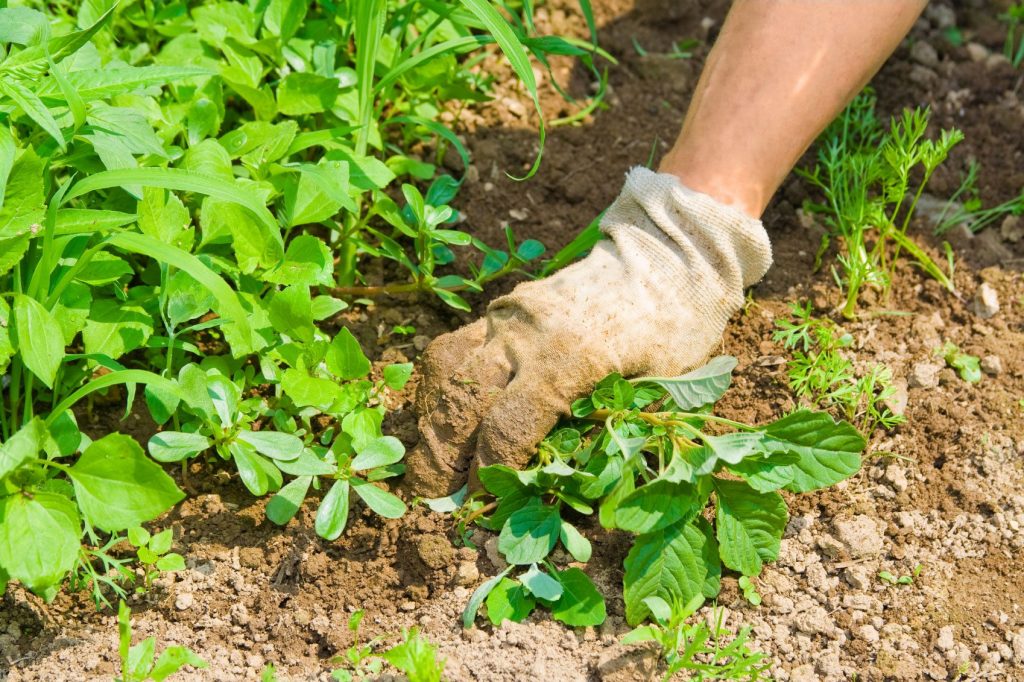Managing pests and weeds is a crucial aspect of maintaining a healthy and thriving garden. These invaders can quickly disrupt the balance of your plants, affecting growth and overall garden health. Whether you’re working with a small balcony garden or a large traditional garden, it’s essential to develop effective pest and weed management strategies to ensure your plants flourish.
Pest Management
Pests, such as aphids, caterpillars, slugs, and beetles, can cause significant damage to your plants if not controlled. The first step in pest management is prevention. One of the simplest ways to prevent pest infestations is by encouraging natural predators, such as ladybugs, lacewings, and birds, which help keep the pest population in check. Additionally, using companion planting can help deter harmful insects. For instance, planting marigolds or nasturtiums near your vegetables can repel aphids and whiteflies.
If pest problems arise, consider organic solutions like insecticidal soap, neem oil, or diatomaceous earth, which are safer for the environment and beneficial insects. Handpicking pests off plants can also be effective for smaller infestations. For more persistent problems, installing row covers or using garden netting can help protect plants from pests without the use of harmful chemicals.
In cases of heavy infestation, it’s important to monitor your plants regularly, as early detection will make control much easier. Regularly inspect the undersides of leaves, stems, and around the roots for signs of pest activity. The sooner you spot a problem, the better the chance of keeping it under control.

Weed Management
Weeds are one of the most common problems for gardeners, as they compete with your desired plants for nutrients, water, and sunlight. Effective weed management starts with preventative measures. One of the best methods for preventing weeds is by using a thick layer of mulch around your plants. Mulch suppresses weed growth, retains moisture, and helps regulate soil temperature, creating a more favorable environment for your plants.
Another effective approach is to use landscaping fabric or weed barriers in areas where you don’t want weeds to grow. These barriers allow water and air to reach the soil but prevent weeds from sprouting. Additionally, regularly pulling weeds by hand (when they’re small) or using a hoe for larger weeds is essential. If weeds are left unchecked, they can quickly overtake your garden, making it difficult for your plants to thrive.
In organic gardening, pre-emergent herbicides—such as corn gluten meal—can be used to prevent weed seeds from germinating without harming your plants. However, always research which products are safe for your specific plant types.

Control Methods
Organic Pest Control Methods
Using organic pest control is both environmentally friendly and effective in keeping your garden healthy without harming beneficial insects or pollinators.
a) Neem Oil
Neem oil is a natural pesticide that disrupts the life cycle of insects by affecting their hormones. It’s particularly effective against pests like aphids, spider mites, and whiteflies. Simply spray it on your plants as a preventive measure or when you notice pest activity. Neem oil is gentle on plants and safe for beneficial insects when used properly.
b) Insecticidal Soap
Insecticidal soap is another non-toxic option for managing soft-bodied pests such as aphids, mealybugs, and spider mites. It works by breaking down the pests’ cell membranes, causing them to dehydrate and die. This method is safe for most plants and can be applied frequently without damage.
c) Companion Planting
Companion planting involves growing certain plants together to help deter pests naturally. For example, basil and tomatoes work well together as basil repels mosquitoes and tomato hornworms. Marigolds are excellent at keeping aphids and nematodes away from your vegetables, while garlic and onions can help deter aphids and ants.
d) Handpicking and Trapping
For smaller pest issues, physically removing them from your plants can be surprisingly effective. Handpicking pests like caterpillars, beetles, and slugs off plants or using traps (such as beer traps for slugs) can keep the population in check without resorting to chemicals.
e) Beneficial Insects
Encouraging beneficial insects, like ladybugs, lacewings, and predatory beetles, is one of the best organic strategies for pest control. These insects feed on aphids, mites, and other common pests. You can attract them by planting flowers such as dill, fennel, and yarrow, which provide nectar for these helpful predators.
Integrated Pest and Weed Management (IPM)
Integrated Pest and Weed Management (IPM) is a holistic approach to pest and weed control that emphasizes a balance between prevention, monitoring, and intervention. By combining different control methods, IPM helps minimize the use of chemical pesticides and herbicides while still keeping pests and weeds under control.
a) Prevention
Start with preventative measures, such as choosing pest-resistant plants, using proper spacing, and ensuring healthy soil. Healthy plants are better able to resist pests and diseases. Similarly, keeping weeds under control from the beginning through mulching or landscape fabric will prevent them from becoming a major problem.
b) Monitoring
Regular monitoring is key to successful pest and weed management. Check your plants regularly for signs of pest activity and weed growth. Early detection means you can take action before the problem becomes widespread.
c) Cultural Controls
Cultural controls involve using gardening techniques to discourage pests and weeds from taking hold. This can include practices like rotating crops, using drip irrigation (to reduce moisture that encourages pests), and selecting plants that are naturally resistant to pests and diseases.
d) Biological Controls
This includes introducing beneficial insects, fungi, or bacteria into your garden to target and control pests naturally. For instance, using nematodes to fight soil-borne pests or introducing Bt (Bacillus thuringiensis) to control caterpillar pests can help keep your garden in balance.
e) Mechanical and Physical Controls
Mechanical controls involve using tools like row covers, barriers, or even barriers like copper tape to prevent pests from accessing your plants. For weeds, physical barriers like thick mulch or landscape fabric can significantly reduce weed growth without the use of chemicals.
